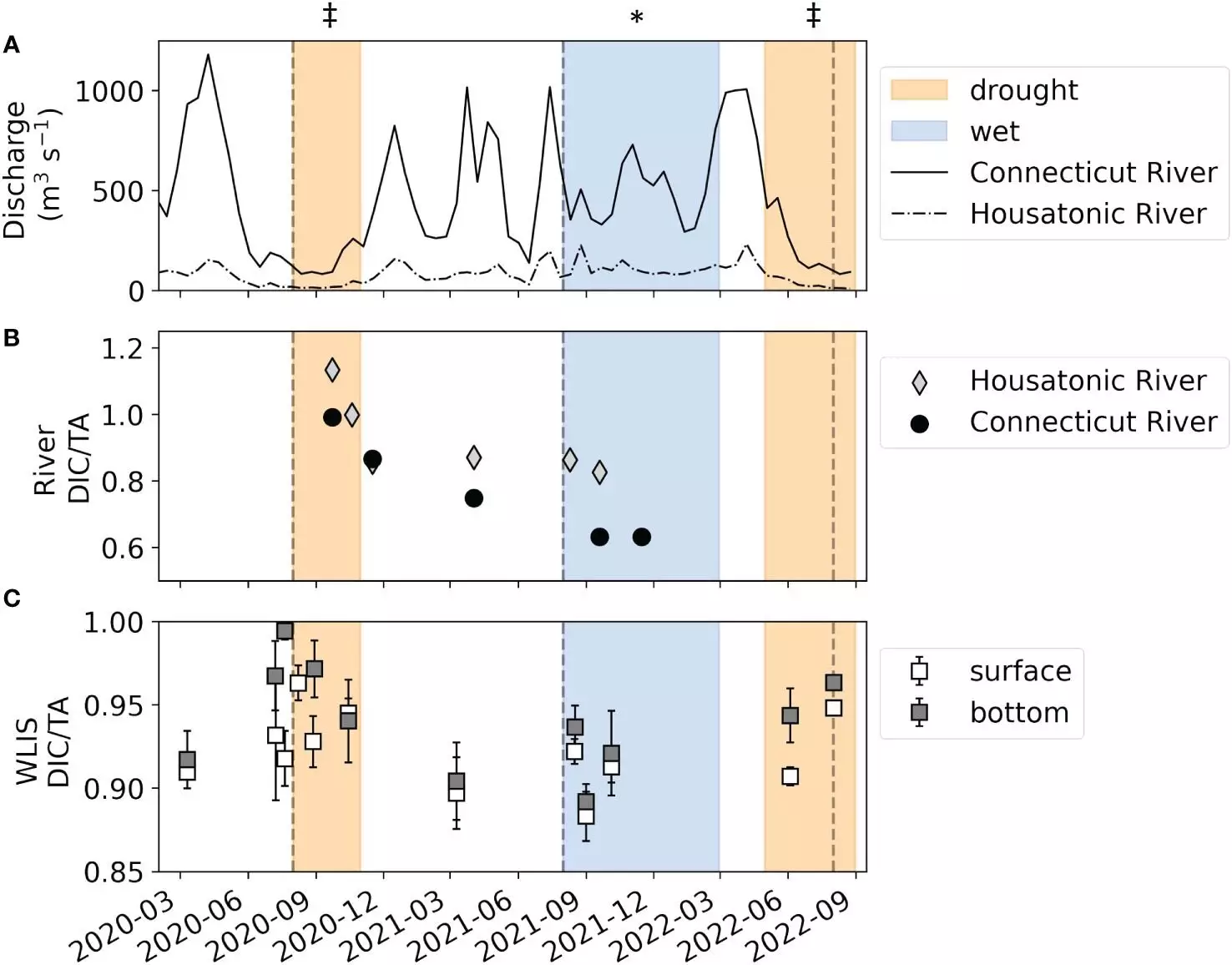Long Island Sound (LIS), nestled in the heart of the North Atlantic, serves as a crucial marine inlet and estuary. Situated within the shadows of bustling urban life, particularly New York City, this magnificent body of water is not only a hub for transportation—bridging passengers, fishermen, and cargo ships—but also a delicate ecosystem teeming with biodiversity. Yet, the ecological wealth of LIS faces profound challenges due to anthropogenic activities that have wrought havoc on its natural balance.
Over the years, the relentless procession of boats has brought about more than just the stir of water; it has ushered in significant environmental repercussions. Noise pollution has compounded the issues at play, but the more insidious threat arises from chemical alterations. The influx of nutrients and pollutants has led to eutrophication, characterized by nutrient oversaturation, driving excessive algal blooms that cloud the waters and disrupt the natural order.
The Alarming Consequences of Eutrophication
Eutrophication isn’t merely an academic concern; it has palpable consequences that ripple through the entire ecosystem. When algal blooms die off, their decomposition consumes vast quantities of oxygen—a vital resource for marine life. This emergence of bottom water hypoxia translates to a perilous environment for organisms dwelling below the surface, especially fish, exacerbating events of mass die-offs. The implications of these biological crises invite scrutiny on how human activities directly shape marine health, and the cascading effects they have on local fisheries and coastal economies are undeniable.
The burgeoning problem of nutrient loading primarily arises from atmospheric nitrogen, wastewater discharge, and fertilizer runoff—each contributing to an acute imbalance in the marine carbonate system. Researchers, including Lauren Barrett from the University of Connecticut, have taken to investigating this phenomenon within Long Island Sound, delving into the intricacies of eutrophication-induced acidification. Their work shines a spotlight on how these shifts threaten to transform LIS and the marine species that depend on its habitat.
Researching the Marine Carbonate System
Between 2020 and 2022, a team of researchers conducted thorough fieldwork in the western reaches of LIS, meticulously analyzing seasonal and annual variations of dissolved organic carbon and total alkalinity. These elements are crucial for understanding shifts within the carbonate system—pH levels alone fail to deliver the comprehensive picture scientists need to gauge changes in marine health accurately.
Conveniently, during this timeframe, researchers could compare findings against years impacted by extreme weather phenomena, such as the torrential rains brought forth by tropical storms in 2021, which radically shifted the water inputs into LIS. This period exemplified the complexity of hydrological dynamics, showcasing the connection between freshwater influx—primarily from the Housatonic and Connecticut Rivers—and the overall health of the estuarine ecosystem. Interestingly, the discharge from these rivers revealed unexpected patterns; higher rates of freshwater inflow in 2021 correlated with relatively lower levels of dissolved organic carbon, contrasting sharply with the drought years that ramped up acidification in LIS.
Droughts and Their Unintended Consequences
The significance of drought cannot be overstated as it plays a pivotal role in shaping the ecological landscape of Long Island Sound. Conventional wisdom may argue that low-flow periods should equate to reduced nutrient inflow and diminished instances of hypoxia; however, the findings from LIS present an opposing narrative. During arid seasons, increased levels of dissolved organic carbon combined with diminishing total alkalinity foster the acidifying conditions detrimental to marine life.
The research elucidates a critical point: combating eutrophication necessitates understanding this paradox and addressing the complex feedback loops between nutrient loading, river flow, and acidification. As climate change looms, altering precipitation patterns and exacerbating drought conditions, the future of Long Island Sound looks increasingly precarious.
The Path Forward: Urgency for Mitigation Measures
Despite concerted efforts to tackle nitrogen pollution, including the implementation of nitrogen total maximum daily loads that saw a 58.5% reduction in nitrogen input by 2016, the urgency remains high. Addressing the manifestations of eutrophication and the resulting acidification is imperative to safeguarding the health of LIS and the myriad of species it supports. Enhanced mitigation strategies are essential for restoring balance, particularly as predictions indicate worsening drought scenarios in our rapidly changing climate.
As stewards of our marine environments, it is our responsibility to foster awareness and action regarding the fragility of ecosystems like Long Island Sound. Collectively, initiatives showcasing resilience and sustainability must be prioritized to ensure marine life not only survives but thrives amid changing ecological tides. The continuation of robust research and community engagement remains vital in shaping the future health and integrity of this invaluable resource.

